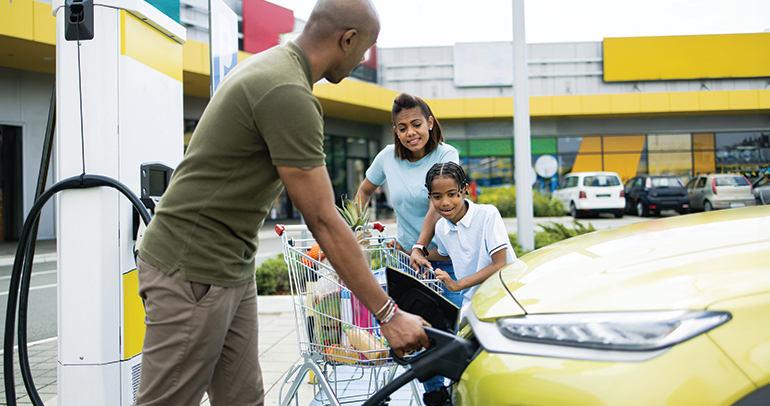
We’ve written extensively about how utilities have responded to the COVID-19 pandemic and the impact the pandemic has had on utility customers. The hard work hasn’t stopped, with many utilities immediately pivoting from implementing response plans to figuring out their long-term plans for the post-pandemic “next normal.” Here’s what we’re hearing from clients and how we expect the next normal to take shape for utilities.
Protecting Brand and Satisfaction Gains
Many utilities either voluntarily suspended customer disconnections or were asked to do so by their regulators. Utilities need to ensure that the goodwill they’ve built through these moratoriums and other customer response efforts aren’t kneecapped by how customers who can’t pay their bills are treated after moratoriums are lifted.
As we enter a recession, most utilities anticipate a significant increase in the number of customers making new payment arrangements and using energy assistance programs. Many of these customers will be learning about and using these programs for the first time, so forward-thinking utilities are creating guides or one-stop shops for customers to help them understand the processes and documents needed to access these programs.
Additionally, many utilities are watching call center metrics closely so they can increase staffing levels appropriately to handle jumps in call volume as moratoriums expire. One of the things utilities need to do now is ensure payment arrangement policies are consistent both between channels—that is, the same arrangement can be made via web, IVR or customer service reps—and within channels. This consistency will reduce contact volume by removing the incentive for customers to “shop around” for the best deal and will also increase satisfaction by providing uniformity across all touch points.
Many utilities with seasonal shutoff moratoriums are looking to that playbook for how to handle the expiration of COVID-19-related moratoriums, though they are anticipating the scale to be larger than normal seasonal volume. Additionally, a number of utilities have increased the frequency of messaging about conservation tips and their energy-efficiency programs to help customers—particularly those financially affected by the pandemic—better manage their energy use.
Pivoting to the Next Normal
Businesses across the country are discovering that working from home is not only feasible for their employees but can result in increased productivity. This realization means that energy use has permanently shifted away from commercial to residential customers. Consumers now working from home indefinitely will look to control their costs through energy-efficiency offerings. These consumers also may be more willing to try different rate offerings that offer the promise of more control and savings.
Additionally, expect consumer demand for solar to continue to grow, driven by motivations to save money and be more self-sufficient. Self-sufficiency is also the driving force behind consumers who want to make their personal “supply chains” as short as possible to increase resilience. This will drive an increasing percentage of new (and existing) residential solar installations to be paired with home battery storage.
Last but certainly not least as it relates to utility programs, we expect consumer demand for electric vehicles to emerge from the pandemic in a significantly stronger place than it was pre-pandemic. I recently wrote about why now is the time for utilities to throw their weight behind this trend—read more here.
The COVID-19 pandemic will put an end to utility-operated local payment offices. Many offices have been closed due to stay-at-home orders, and executives are questioning whether there is a benefit to reopening them when the economy reopens. Smart utilities will take the savings from these office closures and invest in developing easy mobile payment solutions, as we see a significant overlap in our Utility Trusted Brand & Customer Engagement study between customers who pay their bill at a local office and those who would prefer to pay via Apple Pay or Google Wallet.
In the same vein, utilities are noticing an uptick in customers engaging via digital channels. Consumers have expected their utility to offer ways to communicate and transact for a number of years, but the pandemic is increasing use of those offerings and exposing weaknesses in the platforms and processes. As a result, utilities need to accelerate their plans for digital maturity and provide exemplary experiences via mobile devices, social media, chatbots and smart speakers.
Supporting the Business Community
Utilities are also taking steps to help support the economic recovery of small and midsized businesses. These efforts have twin benefits. First, these businesses employ a significant number of the utilities’ residential customers and thus help reduce the potential for arrearages within that customer segment. Second, small and midsized business rates have among the largest margins for utilities.
Some utilities such as DTE are providing personal protective equipment to small businesses to enable them to safely reopen. Others are actively engaging with their business community through customer panels and other research to determine what the best course of action is to offer support.
Unfortunately, many businesses will be unable to weather the COVID-19 storm. However, because the barriers to entry for many small and midsized businesses are relatively low, utilities need to anticipate onboarding new business customers as the economy rebounds and new restaurant, retail and professional service businesses fill the holes left by those unable to stay in business. Successful onboarding helps new business customers understand how to do business with the utility and increases brand perception while reducing service contacts.
If you’d like more information about how COVID-19 has impacted the utility industry, please contact us about our upcoming report. And if you’d like to put plans in place to successfully pivot to the next normal, please get in touch.
Click below to learn more about Utility Response to the COVID-19 Pandemic.








